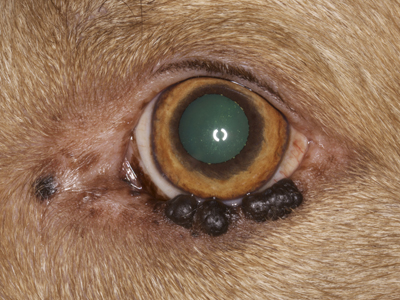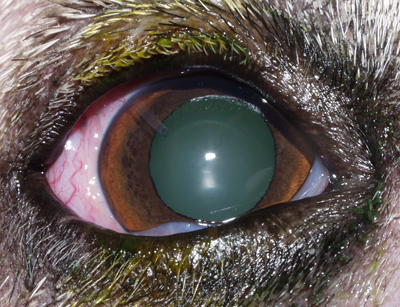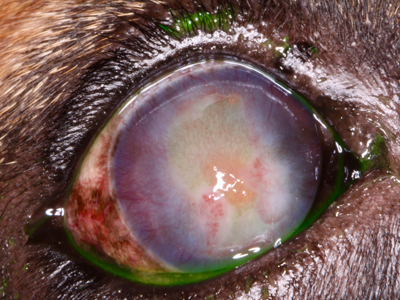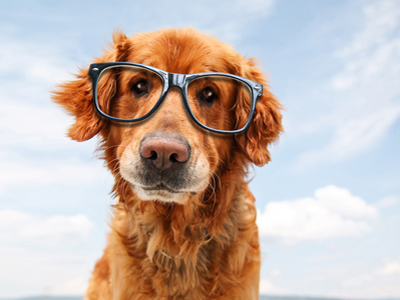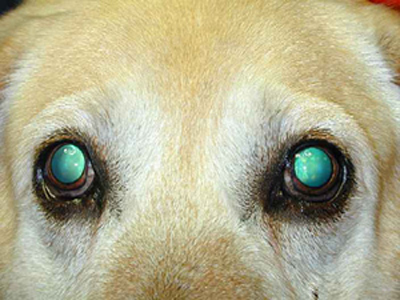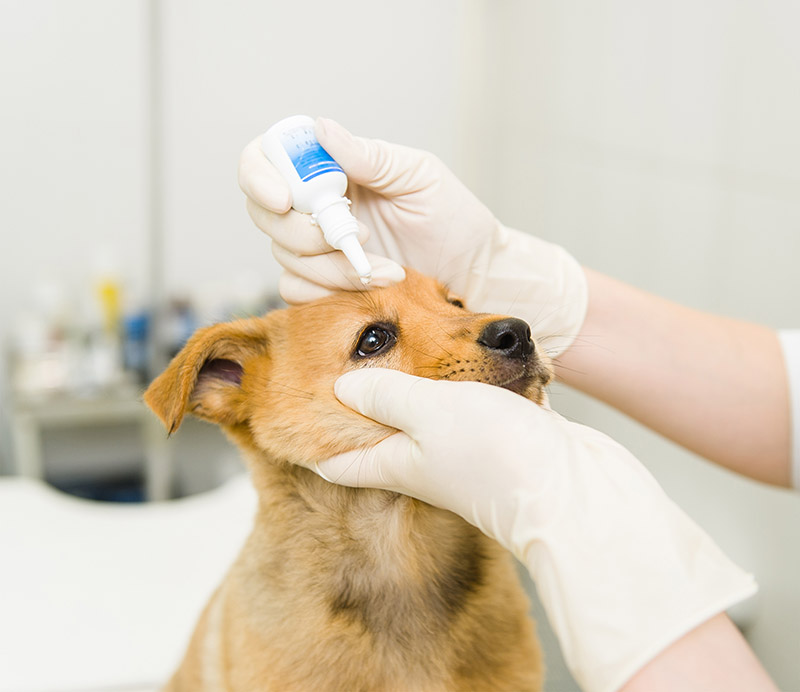CLIENT EDUCATION SERIES
Cataracts and Cataract Surgery
Cataracts are a leading cause of blindness in dogs. The term cataract refers to any opacity of the lens. Cataracts can either be very small (a cloudy spot) having minimal impact on vision or they can involve the entire lens resulting in blindness.
Canine Eyelid Masses
Eyelid masses or tumors are a common finding in older canine patients, although they can occur at any age. Fortunately, most eyelid margin tumors in dogs are benign masses which originate from the glands or skin of the eyelid. Eyelid tumors often enlarge in size over time and can become inflamed, cause pain, and rub on the surface of the eye leading to corneal ulcers. Early treatment is often less invasive and more likely to be curative.
Glaucoma and Glaucoma Surgery
Glaucoma is a diverse group of diseases that are characterized by an increase in the pressure inside of the eye. This increase in eye pressure (intraocular pressure) is painful and can lead to irreversible damage to the retina and optic nerve - the structures that transmit visual information to the brain.
Non-Healing/Indolent Ulcers
Non-healing ulcers, also known as Indolent ulcers, Boxer ulcers, or Spontaneous Chronic Corneal Epithelial Defects (SCCEDs), are a specific type of ulcer in which the surface layer of the cornea (epithelium) does not adhere to the underlying layer (stroma).
Non-healing ulcers are characterized by a very superficial ulcer with a loose edge (lip) of epithelium. These ulcers do not usually heal on their own and can persist for months resulting in pain and scar tissue formation.
Pigmentary Uveitis/ Golden Retriever Uveitis
Pigmentary uveitis, also known as Golden Retriever Uveitis (GRU), is an ocular condition commonly seen in the Golden Retriever breed, although other breeds can also be affected. GRU is presumed to be an inherited disease that can lead to severe and vision threatening complications.
Surgical Options for the Painful Blind Eye
The blind and painful eye is an unfortunate, but somewhat common problem for veterinary patients. Our primary goal for these patients is to eliminate the source of discomfort in order to maintain a good quality of life. There are three main surgical options that we may discuss with you for your pet.
Sudden Acquired Retinal Degeneration Syndrome
Sudden acquired retinal degeneration syndrome (SARDS) is a poorly understood syndrome that results in retinal degeneration (loss of function) that has only been reported in dogs.
Elizabethan Collar (aka the cone of shame)
Remember this is only temporary!! Although they can be frustrating for animals and owners alike, it is very important that they wear them at all times for the prescribed duration. The damage that can occur with rubbing and pawing at the eye could possibly lead to additional complications.
Living with a Blind pet
There are many reasons that your pet may lose vision in one or both eyes during their lifetime. Although vision loss can seem devastating to us, it is important to remember that pets primarily process information through their senses of smell and hearing. In some pets, vision loss is a gradual process, and it is not uncommon for pet owners to not realize how visually impaired their pet is until there is a change in their environment. When vision loss is sudden the symptoms are much more obvious to owners, but these pets can also adapt quite well to blindness with time and patience.
How to administer eye medications
Every animal tolerates eye medications differently. Some pets are great at sitting still while others need some extra care if they are fearful or wiggly. The best way to approach administering any medication to an animal is to try to make it a quick and positive experience. Encouraging reinforcement is always helpful, such as giving them treats and continuous praise during the whole process. The goal is to not draw it out too long to where your animal can start to get anxious, knowing that “something is about to happen”.

